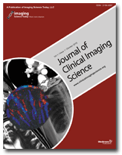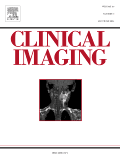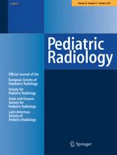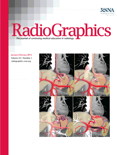
EUROPEAN RADIOLOGY
metrics 2024
Elevating Standards in Radiology Research
Introduction
EUROPEAN RADIOLOGY, published by SPRINGER, stands as a prestigious international journal in the field of radiology, nuclear medicine, and imaging, with an impressive impact factor that underscores its significance among peers. With an ISSN of 0938-7994 and an E-ISSN of 1432-1084, this journal provides a platform for cutting-edge research and advancements in medical imaging from 1991 to 2024. Recognized as a Q1 journal in both general Medicine and the specialized Radiology category by 2023, EUROPEAN RADIOLOGY ranks an impressive #17 out of 333 in its field according to Scopus, placing it in the 95th percentile. While it does not currently offer Open Access options, the journal remains essential reading for researchers, professionals, and students striving to stay at the forefront of developments in diagnostic imaging and related technologies. By contributing to a comprehensive understanding of radiological practices, EUROPEAN RADIOLOGY plays a crucial role in shaping the future of medical diagnosis and patient care.
Metrics 2024
 1.66
1.66 4.70
4.70 5.20
5.20 173
173Metrics History
Rank 2024
Scopus
IF (Web Of Science)
JCI (Web Of Science)
Quartile History
Similar Journals

Journal of Clinical Imaging Science
Innovating Insights in Radiology and Imaging ScienceWelcome to the Journal of Clinical Imaging Science, a dedicated platform for disseminating pioneering research in the field of radiology, nuclear medicine, and imaging. Published by SCIENTIFIC SCHOLAR LLC, this peer-reviewed journal offers a prominent forum for researchers, professionals, and students to share insights and advancements that push the boundaries of clinical imaging practice and technology. With a proud history of publication since 2011 and converged years extending through 2024, the journal currently ranks in the top quartile (Q3) as per the 2023 categorization in the relevant field, positioning itself as a valuable resource among its peers. While embracing a non-open access model, it guarantees high-quality content that contributes to the 36th percentile of Scopus rankings for medicine and imaging sciences. The Journal of Clinical Imaging Science aspires to enhance the knowledge base in clinical settings and promote innovative methodologies, serving as an essential tool for advancing education and practice in imaging sciences.

RADIOLOGY
Connecting researchers and practitioners in radiology.RADIOLOGY, published by the Radiological Society of North America (RSNA), stands as a premier journal in the fields of radiology, nuclear medicine, and imaging. Established in 1945, this esteemed journal has consistently provided groundbreaking research and insights, helping to shape advancements in diagnostic imaging and therapeutic interventions. With a commendable Q1 ranking in its category and a remarkable 99th percentile ranking in Scopus, RADIOLOGY continues to be a pivotal resource for clinicians, researchers, and students alike. Although not an Open Access journal, it offers a wealth of high-quality peer-reviewed articles that contribute significantly to the ongoing discourse in the medical community. With a strong focus on innovative techniques and the integration of new technologies, RADIOLOGY remains essential for professionals aiming to stay at the forefront of medical imaging practices.

Radiologie
Innovating Diagnostic Accuracy Through Cutting-Edge ImagingRadiologie, published by SPRINGER HEIDELBERG, is an emerging journal dedicated to the fields of radiology, nuclear medicine, and imaging. With an ISSN of 2731-7048 and E-ISSN 2731-7056, this journal does not currently offer open access, providing a traditional yet respected platform for scholarly communication. Founded in 2022, it aims to advance the understanding of cutting-edge imaging techniques and their applications in clinical practice, contributing to improvements in diagnostic accuracy and patient care. Despite its recent establishment, Radiologie is positioned within the Q4 quartile category, reflecting its developing presence in the academic landscape, with a current Scopus rank of #231 out of 333 in its category. The journal serves as a vital resource for researchers, professionals, and students seeking to stay abreast of the latest developments in radiological science, imaging technology, and their clinical implications, ensuring ongoing engagement and advancement in this critical area of healthcare.

Journal of the Belgian Society of Radiology
Connecting Professionals Through Cutting-Edge ResearchThe Journal of the Belgian Society of Radiology, published by UBIQUITY PRESS LTD, is a pivotal resource in the field of radiology, nuclear medicine, and imaging. With an ISSN of 2514-8281 and E-ISSN of 2514-8281, this open access journal has been dedicated to fostering the dissemination of high-quality research since its establishment in 2010. Distributed from the United Kingdom, it offers a platform for innovative studies, case reports, and reviews that contribute to the advancement of radiological sciences. Despite its current Q4 category ranking within Scopus, the journal plays a critical role in sharing essential findings with a community of over 1,200 professionals and students eager to stay abreast of emerging trends and technological advancements in imaging. By enabling unrestricted access to its publications, the journal encourages collaborative research and knowledge exchange that transcends geographic boundaries, solidifying its importance for both established researchers and emerging scholars in the discipline.

Clinical Imaging
Pioneering Discoveries in Radiology and Nuclear MedicineClinical Imaging, published by Elsevier Science Inc, is a renowned journal dedicated to the field of radiology, nuclear medicine, and imaging. With an ISSN of 0899-7071 and an E-ISSN of 1873-4499, this esteemed publication has established its significance in advancing imaging science since its inception in 1989 and continues to make impactful contributions to the discipline through 2024. The journal holds a prestigious Q2 ranking in the category of Radiology, Nuclear Medicine, and Imaging, reflecting its critical role in bridging research and clinical practice. Currently ranked #113 out of 333 by Scopus, with a notable 66th percentile, it offers a platform for disseminating high-quality research, reviews, and case studies that inspire innovation and enhance imaging techniques. Although it primarily functions as a subscription-based journal, it remains dedicated to accessibility and the dissemination of pivotal findings that inform both academia and clinical settings. Clinical Imaging is essential for researchers, professionals, and students alike, offering insights that shape the future of diagnostic imaging.

PEDIATRIC RADIOLOGY
Empowering clinicians through cutting-edge research.Pediatric Radiology is a leading journal published by Springer that provides a crucial platform for the dissemination of research in the fields of pediatrics, perinatology, and radiology. Since its inception in 1973, the journal has continually contributed to the advancement of medical imaging techniques and their application in diagnosing and treating pediatric conditions. With its impact factor reflecting a Q2 ranking in both Pediatrics and Radiology categories as of 2023, Pediatric Radiology is highly regarded in scholarly circles, aiding researchers, clinicians, and students to stay at the forefront of innovations and findings in the field. Although the journal does not offer open access, it continues to be an essential resource for evidence-based information that enhances clinical practice and improves health outcomes for children globally. The journal's reach is further established through its solid Scopus rankings, indicating its relevance and influence in the global medical community.

Diagnostic and Interventional Imaging
Leading the Way in Diagnostic and Interventional BreakthroughsDiagnostic and Interventional Imaging, published by Elsevier Masson, stands as a prominent journal in the fields of Radiology, Nuclear Medicine, and Imaging. With a significant impact factor and a reputation for high-quality research, this journal is dedicated to advancing the understanding and application of diagnostic and interventional imaging techniques. It has achieved an impressive Q1 ranking across multiple categories including Medicine (miscellaneous) and Radiological and Ultrasound Technology, demonstrating its esteemed position within the academic community. The journal features cutting-edge studies and reviews, reflecting the latest innovations and practices from 2012 to 2024. Researchers, healthcare professionals, and students alike can look forward to accessing valuable insights that drive forward the discipline and improve patient outcomes, as evidenced by its robust Scopus rankings placing it among the top journals in its domain.

RADIOGRAPHICS
Illuminating the Future of RadiologyRADIOGRAPHICS, published by the Radiological Society of North America (RSNA), is a premier academic journal dedicated to the field of radiology, nuclear medicine, and imaging. With an impressive impact factor and recognition in the top quartile (Q1) of both Medicine (miscellaneous) and Radiology, Nuclear Medicine and Imaging categories, RADIOGRAPHICS stands out as a leading platform for disseminating high-quality research and clinical findings. Since its inception in 1985 and projected to run until 2024, the journal has consistently provided essential insights into cutting-edge imaging techniques and advancements in radiological practices, making it invaluable for professionals, researchers, and students alike. Although it does not offer open access, the journal continues to flourish with a robust reputation, ranked 35th in its field according to Scopus, placing it within the 89th percentile of its category. With an unwavering commitment to enhancing the understanding and application of radiological sciences, RADIOGRAPHICS remains a pivotal resource for advancing knowledge and expertise within the medical community.

SA Journal of Radiology
Elevating Standards: Your Source for Cutting-Edge Radiology ResearchThe SA Journal of Radiology is a prominent open-access journal published by AOSIS, dedicated to advancing knowledge in the fields of Radiology and Ultrasound Technology. Established in 2004, this South African journal provides a platform for researchers, professionals, and students to disseminate valuable findings and share innovative practices in medical imaging. With an ISSN of 1027-202X and an E-ISSN of 2078-6778, the journal has become an important resource for those involved in radiological sciences, despite currently holding a Q4 ranking in both Radiological and Ultrasound Technology and Radiology, Nuclear Medicine and Imaging categories. Covering a converged time span from 2014 to 2024, the journal aims to promote scholarly communication and enhance the accessibility of research, positioning itself as a key player in the global radiological community. In a landscape where open access is increasingly critical, the SA Journal of Radiology is committed to fostering research collaboration and facilitating the exchange of ideas among clinicians and academics alike.

Tomography
Empowering professionals with cutting-edge imaging insights.Tomography is an esteemed peer-reviewed journal published by MDPI, focusing on a broad spectrum of topics related to medical imaging and diagnostics. Launched in 2015, this Open Access journal serves as a vital platform for researchers, professionals, and students in the fields of medicine, radiology, nuclear medicine, and imaging. With an impressive impact factor reflecting its relevance, the journal has achieved a quartile ranking of Q2 in both Medicine (Miscellaneous) and Radiology, Nuclear Medicine, and Imaging as of 2023. Renowned for disseminating high-quality research, Tomography welcomes original research articles, reviews, and technical notes, fostering innovation and collaboration within the scientific community. Housed in Basel, Switzerland, the journal aims to bridge the gap between fundamental research and clinical application, appealing to a diverse readership eager to advance the field of medical imaging.